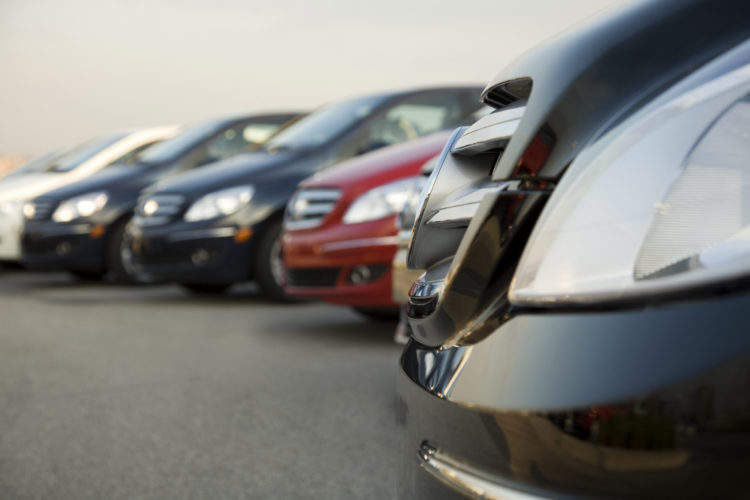The EU has set tough emissions
targets for 2015, which some manufacturers are struggling reach,
says Gareth Hession
Increasing pressure from the media,
legislators and a rising tide of consumer awareness in recent years
has brought EU regulation EC 443-2009 into sharp focus for the
automotive industry.
The regulation which sets the industry as a
whole a CO2 emissions target to reach by 2015, as
well as giving each manufacturer group an individual target based
on the kerb weight of their cars, is playing an increasingly
important role in the development of future products.
The path to achieving these targets, however,
is proving to be harder than anticipated for some manufacturers,
and the challenge is made even more complicated set against a
backdrop of tough economic conditions and reduced consumer
spending.
The tactics and methods deployed by
manufacturers and the speed at which they are progressing to meet
their targets certainly paints an interesting picture across
Europe.
The CO2 target for each
manufacturer every year is based on the average vehicle mass for
that year and so it is not possible to calculate in advance.
However, it is possible to calculate notional targets based on the
average vehicle mass for 2011, and from that to calculate a
‘distance to target’ for each of the high-volume groups.
How well do you really know your competitors?
Access the most comprehensive Company Profiles on the market, powered by GlobalData. Save hours of research. Gain competitive edge.

Thank you!
Your download email will arrive shortly
Not ready to buy yet? Download a free sample
We are confident about the unique quality of our Company Profiles. However, we want you to make the most beneficial decision for your business, so we offer a free sample that you can download by submitting the below form
By GlobalDataSo, although Fiat was crowned the lowest
CO2-emitting volume brand in Europe in 2011 earlier this
year in research by JATO Dynamics, as a manufacturer group it
actually ranks fourth in terms of its ‘distance to target’. This is
due to its low average vehicle mass, which means that although it
produces low-emitting cars, because they are lighter their overall
CO2 target is tougher to meet.
In fact it is PSA Peugeot Citroën which is best
placed to meet the 2015 target based on our calculations, largely
because of its EV offerings, the success of its diesel-electric
hybrid technology and low emissions from its HDi diesel
engines.
Toyota joined its industry peers in 2012 by
overachieving its 2012 emissions target ahead of schedule. The
group’s hybrid and SUV models increase its average vehicle mass,
which means a higher emissions target, while a combination of the
hybrid technology and ‘Optimal Drive’ fuel-saving technology on
non-hybrid models means it sells large volumes of very low-emitting
vehicles. The existence of its high-emitting models such as the
Landcruiser, however, could make the 2015 target tougher to
meet.
As well as those manufacturers doing relatively
well in terms of meeting their targets, there are those that are
struggling too. Although developments are in the pipeline, the
likes of Tata Motors and Mazda will need to make significant
improvements if they are to meet their challenge. Creating smaller
models, investing in the development of more advanced plug-in
versions and, of course, the introduction of more hybrid vehicles
could be ways to bring them closer to their targets, but some
question whether time is running out for them.
The art of pooling
So what can OEMs do to improve their
odds? The strategic teaming up of brands under a larger
manufacturer group umbrella, to spread the burden of meeting
CO2 emission targets, can be a lifeline for those
manufacturers struggling to meet their targets. So important in
fact that when Fiat took control of Chrysler a few years ago it was
a condition of the deal. Pooling, however, can essentially take
place even if the manufacturers involved don’t have common
ownership.
We suggested last year that Mitsubishi could
form a pool with PSA as the Japanese manufacturer looked to be at
risk of missing its CO2 targets, but PSA’s recent
strategic alliance with GM makes that option very unlikely. In fact
it is now also less necessary as Mitsubishi has made great strides
on its own with its zero-emission i-MiEV and new diesel engine
technology in its ASX compact crossover, significantly improving
its CO2 credentials.
More recently it is clear that Porsche and
Subaru, which are both struggling to meet their CO2
targets, could benefit from pooling – Porsche due to obvious ties
with VW Group and Subaru to Toyota, one of its key shareholders.
Both of these groups are currently under the 2012 target and well
placed to reach the 2015 target.
Our research shows the impact this hypothetical
pooling would have. While the situation would remain more or less
the same for VW Group and Toyota, the benefits to Porsche and
Subaru would be immense, helping move them towards their 2015
targets. If Porsche and Subaru were to go it alone they would be
46% and 25% away from their 2015 target respectively.
But with all this focus on
CO2 emissions let’s not forget the main driver of
these businesses, profit, and the tough balancing act they face
with larger engine cars being more profitable, but also having
higher CO2 emissions. Mini and Chevrolet, for
example, both saw their emissions rise in 2011 following the
successful introduction of larger, more profitable models.However,
the tough economic climate has also opened up opportunities for
manufacturers, especially as consumers look to smaller, more
efficient cars. By offering multiple add-ons and accessories
manufacturers have actually increased the profitability of these
smaller vehicles Opel/Vauxhall’s new Adam is just another example
of a manufacturer focusing on this opportunity.
The move towards hybrid vehicles has also
proved successful for many manufacturers. This is not only because
the likes of Toyota’s Prius and Lexus’s hybrid range (which are
becoming increasingly popular with consumers) have lower emissions
but because the mass of batteries required has the effect of
raising the target emissions for the manufacturer. For many in the
industry this in fact calls into question the accuracy of current
EU regulation that, while intended to be technology neutral, is
based on kerb weight.
The legislative landscape running up to 2015
and beyond will only get tougher as low-emission cars become more
mainstream. Even as this piece is being written, early sightings of
the latest legislation have already sparked much debate over how
tough the Commission should be prepared to be with
manufacturers.
Changes to ‘super credits’, which allow each
car with a CO2 emission of less than 50g/km to be
counted as a number of ‘regular’ cars (for example, one Nissan Leaf
sale equals the sale of 3.5 cars in 2012) for a manufacturer is a
sign of the tough challenge ahead. These benefits are due to
diminish over the next few years and by 2015 the sale of such
vehicles will only count for 1.5 cars.
While it’s evident that there’s been
significant progress in bringing down CO2 emissions
of new cars across Europe, some manufacturers clearly have more
work to do than others. Meeting future targets will lie in the
ability of manufacturers to juggle new technological developments,
changing segment trends and an increasingly challenging European
economic landscape. This race is just about to get a lot more
interesting.
Gareth Hession is vice-president, research
at JATO Dynamics.







